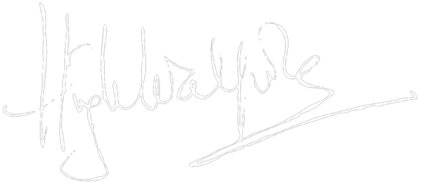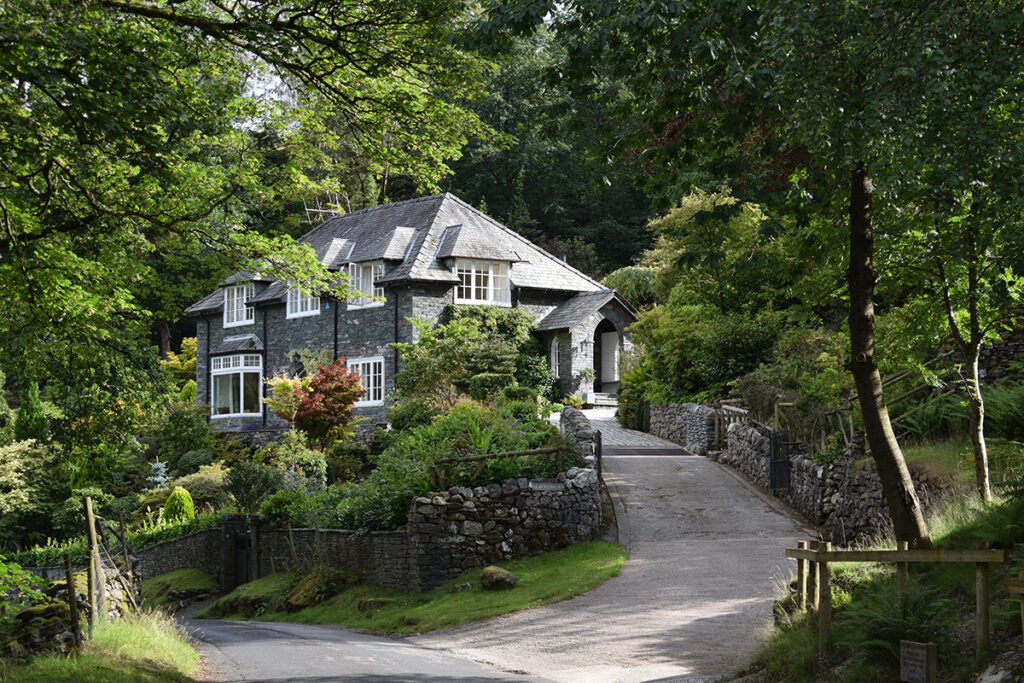
For the latter part of his life, Hugh Walpole lived in Brackenburn, a country house on the shores of Derwentwater in The Lake District and held a flat in Piccadilly as his London base.
During his childhood and through his rise to fame however, he lived in quite a few places. His early days saw him move around a lot, living in family, collegial, temporary or leased accommodation, mainly due to the fact his father was an anglican priest and teacher, a job which took him and his family to many locations around the world and left the young Hugh in various boarding schools.
Whilst many may only see the later life of Hugh Walpole comfortably at home in Britain’s glorious Lake District, his younger days were much more nomadic. So buckle up for a comprehensive virtual tour of everywhere Hugh Walpole lodged and lived.
1884 – Hugh is Born in New Zealand
After Hugh Walpole’s father George Henry Somerset Walpole graduated from his education at Cambridge, England, he was invited to tutor in Truro, Cornwall, England and also took on his first office of curacy there. Somerset Walpole met and married a local girl Mildred whilst in Truro and in 1882 was offered, and accepted, the incumbency of St Mary’s Pro-Cathedral, Auckland, New Zealand. Two years later they had their first child, Hugh.
In 1884 when Hugh was born, the family were living in the vicarage of St. Mary’s Parnell, Auckland, though Hugh’s constant moving started in his infant years as in 1885 just a year later, a new vicarage was built for them to move into.
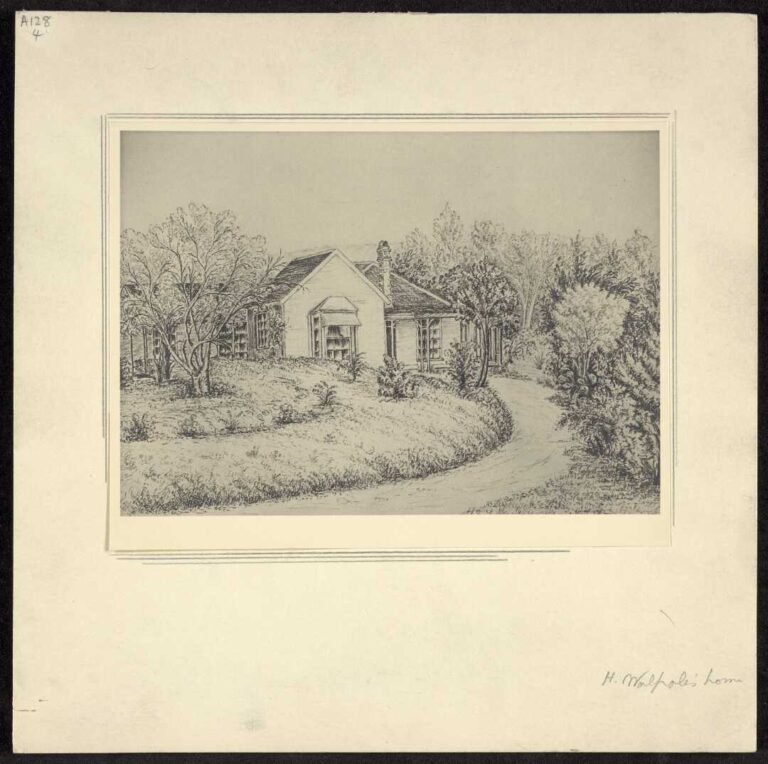
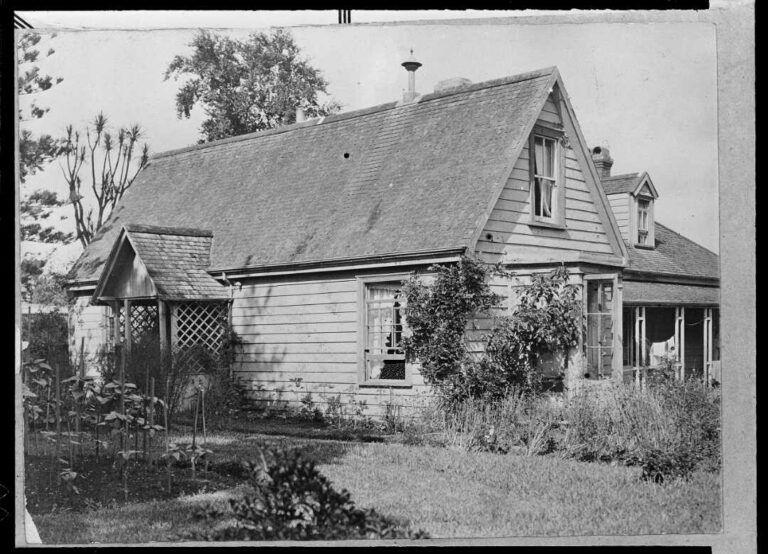
A year later in 1886, Hugh’s father was offered a living in Wellington, however he avoided yet another move for young Hugh by deciding to stay in Auckland. So Hugh’s first five years were spent in New Zealand until in 1889 his father took on a role in the General Theological Seminary of New York City. The family were on the move again.
1889 – A Brief Stay In Cornwall
In 1889, Hugh’s father sailed for New York, though his mother took Hugh (and his new sister Dorothea who had been born in 1887) back to live with her family in Truro at 1 Strangeway’s Terrace.
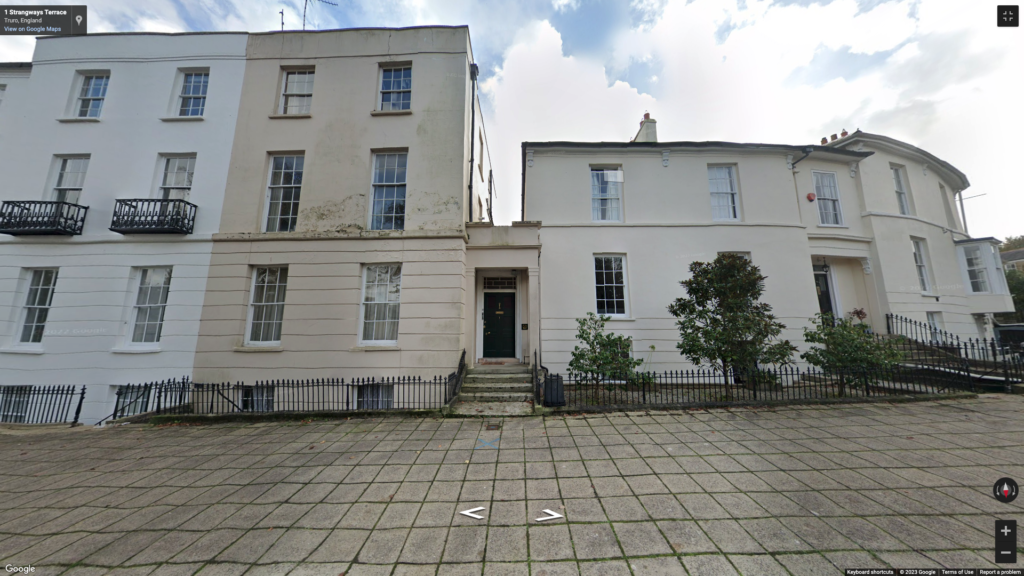
1890 – To America
The stay in Truro didn’t last long. In 1890 Mildred Walpole and her two children travelled to New York to join Somerset Walpole where he was living at 412 West 20th Street.

1893 – Back To England (Alone.) Truro, Marlow & Kingston Deverill
In 1892 Mildred Walpole gave birth to a third child, Hugh’s younger brother Robin (although he actually was christened Robert Henry). Hugh wasn’t getting on with American children, and his parents wanted him to grow up as an Englishman, so in 1893 they sent Hugh off to a boarding school in England in a bid to provide a good education. His first school back in Truro was Newham House boarding school in Truro, where he stayed until a move to Sir William Borlase’s Grammar School in Marlow in 1895, found him bullied, frightened and miserable.
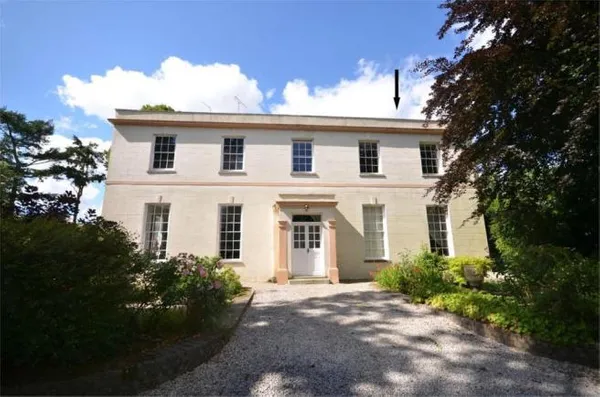

In one of his autobiographical works “The Roman Fountain”, Hugh sums up his time at Marlow.
“There are times when I am sure that life is, in positive reality, a dream, and that I shall wake up at any hour and find that I am back in my dormitory at Marlow again. Waking to that swaying and sinking of my bed, aware that in a moment I shall be thrown out of it, stripped of my nightshirt and beaten with corded towels. At such moments my apprehension is exactly the same as it was forty years ago – I am defenceless and naked in a world of hostile enemies.”
In 1894, just before entering Marlow, Hugh’s father spent his summer vacation from America in England in at Longbridge Deverill in Wiltshire and a few miles down the road at Kingston Deverill, the Walpole’s became good friends with the Rev. William Moore and his family who lived in the Rectory.
The following summer, with his family back in America, Hugh spent his holidays from Marlow school at the Rectory, and it was here, significantly, having been given the free reign of the library and discovering “Guy Mannering” and “Quentin Durward” on its shelves, that Hugh’s life long obsessions with Walter Scott began. One wonders if Hugh’s most famous works the Herries Chronicles would ever have been written if he had not discovered Scott at Kingston Deverill.
A year later at the end of the summer term of 1896, Hugh’s misery at Marlow was discovered and he was removed. Hugh was on the move again.
1896 – Kings School, Canterbury
After his removal from Marlow, with his parents still in New York, Hugh was sent to the Junior School of the King’s School, Canterbury. It was the Cathedral that made an impression on him which lasted the rest of his life. He only spent 5 terms at Canterbury but felt that its thirteen hundred year history gave him a sense of belonging at least to the institution. After his death many of his manuscripts and artefacts were bequeathed to Kings School, where they remain as a collection. Hugh stayed at Canterbury through 1897.
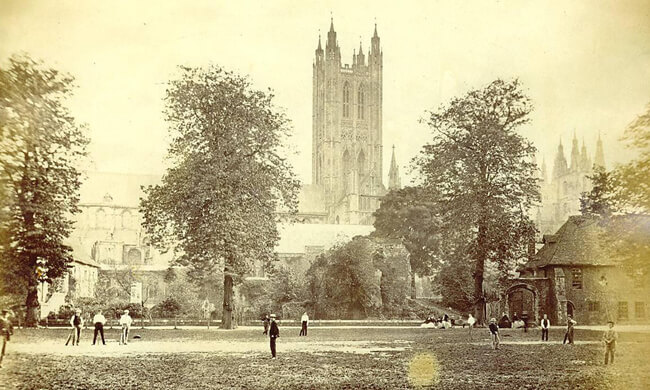
1898 – Bede College, Durham
In December 1896 Hugh’s father had became principal of St Bede College for the training of elementary school masters at Durham and sailed back to England. In Easter 1898 Hugh went to live with his parents in the Principal’s house that was ‘tacked on’ to the college. Hugh became a day boy at St Bede and although school life there was unremarkable, the city of Durham did at least have an old subscription library which fed his appetite for the latest writers of the day.
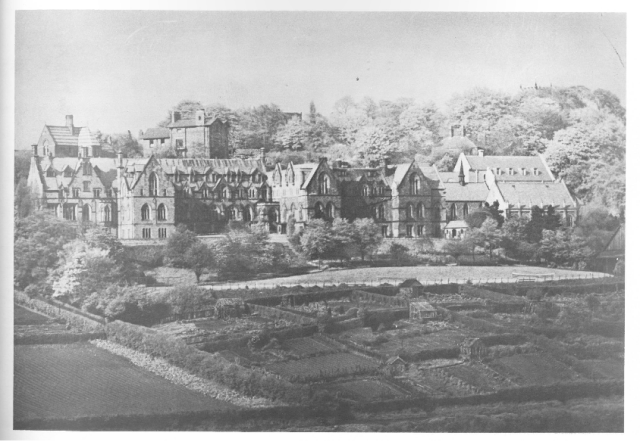
His school reports were poor though, citing carelessness, inattention and the ‘inability to learn anything’. His parents saw him as a difficult problem during the time at Durham. However it was whilst at Durham that he conceived his first historical novel. In 1897 he scrawled in a childish hand and bound in brown paper ‘Colchester Manor’, the first volume of a trilogy dealing with Stuart times.
1898 – 1903 Holidays at Sower Myre farm, Gosforth
During his years at Durham, the Walpole family holidayed at Sower Myre farm in Gosforth (actually called Sowermyrr farm in fact), south west Cumberland (now known as Cumbria). They would stay with a farming family named Armstrong, and Hugh kept in touch with them throughout his life. From the beach at Seascale to the views of Langdales, Scafell and Wastwater lake, this was to become the start of his love affair with the Lake District. In his autobiographical work “The Apple Trees”, published in 1932, he recalls his time spent here and documents that on an excursion he sat in a field above Ullswater with his mother and declared prophetically “This is where I shall live when I come back.”
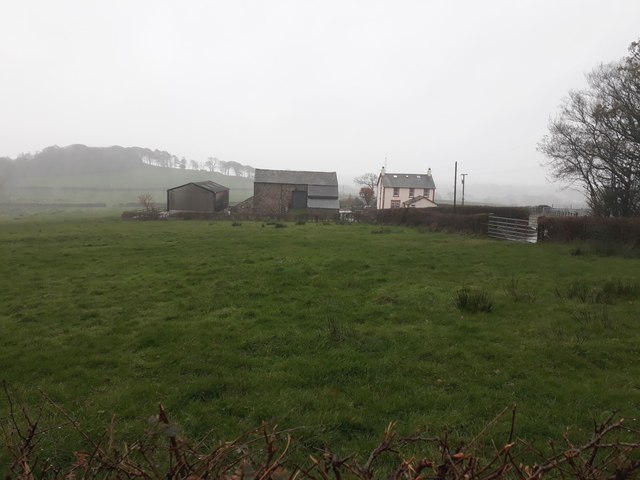
1903 – Cambridge
As Hugh’s education progressed, despite struggling through the entrance exam, in October 1903, Hugh entered Emmanuel College, Cambridge as a subsizar (a student who receives some form of assistance such as meals, lower fees or lodging during his or her period of study, in some cases in return for doing a defined job.). In Cambridge he took lodgings at 37 Earl Street.
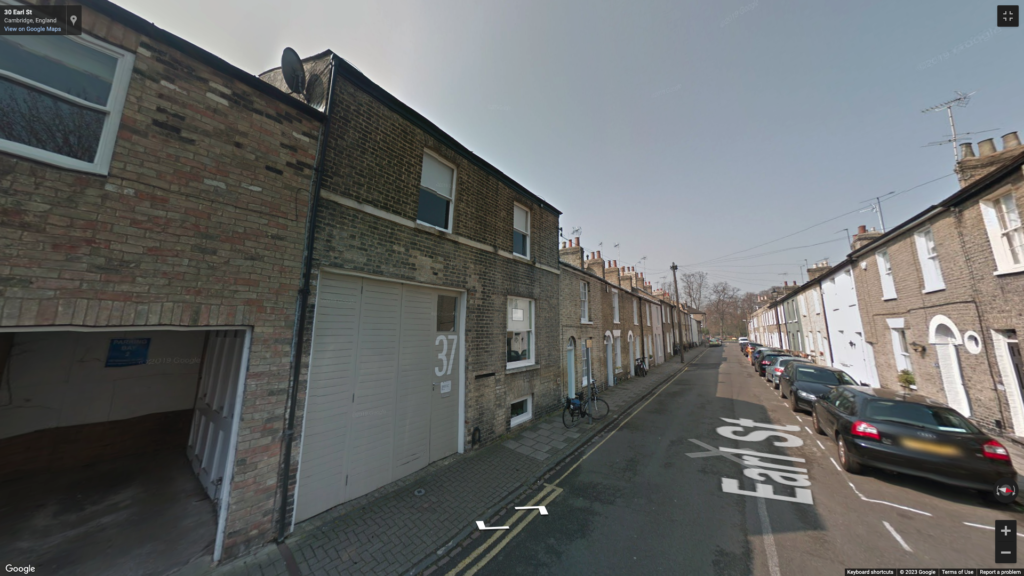
In his first year at Cambridge, his father took a post as Rector of Lambeth, and during the holidays Hugh would stay with his parents in London. As he was exposed to a wider literary landscape, it was whilst at Cambridge that Hugh formed his first realisation that all he wanted to do was write stories, although his parents had always expected him to follow in his father’s footsteps and take a position in the clergy. In an exchange of letters between Hugh and his father, he cited his wish to pursue a search for a literary post and a vow to turn his back on a career in the church, something that didn’t go down well with the family, resulting in a hasty backing down by Hugh. He vowed to quell his ‘momentary rebellion’.
He duly received a letter from Canon Lambert, the Chaplain Superintendent of the Mersey Mission to Seamen offering Hugh the post of Lay Missioner with a salary of £84 per year.
1906 – Liverpool & Lambeth
After leaving Cambridge, in September 1906 he arrived in Liverpool to start his post at the Mission to Seamen. He lodged with a Miss Hales at 32 Peel Street, Liverpool.
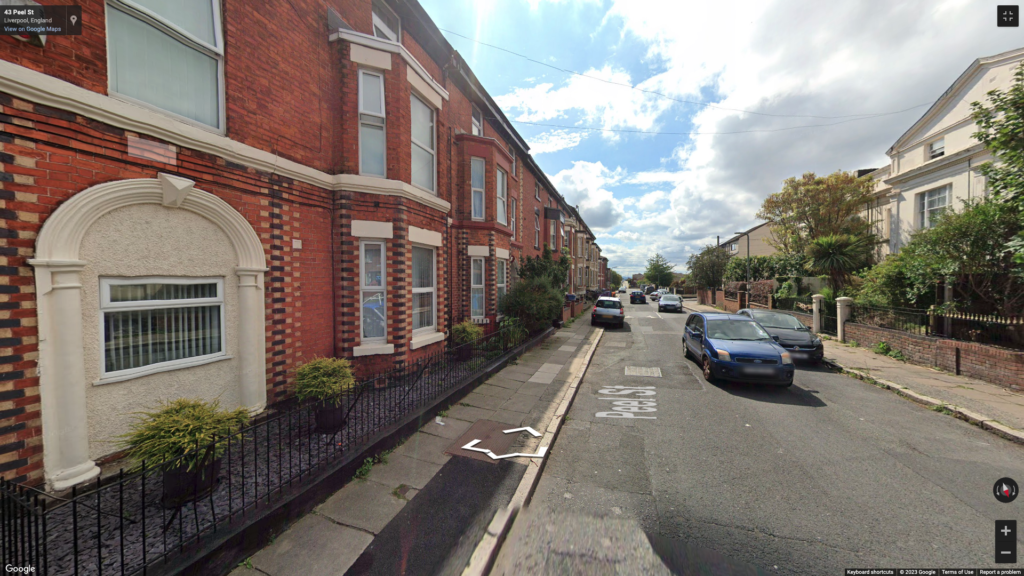
Every spare minute in Liverpool was spent reading, writing and going to the theatre. Indeed he started the formation of his first attempt at a novel called “The Abbey’ and quickly wrote 12 chapters before getting bewildered with the characters. He kept those first chapters and fifteen years later they became a foundation for his book ‘The Cathedral’. The exercise however did cement his determination to become a writer and during his time in Liverpool he began his habit of writing to other authors.
During his holidays from the mission, Hugh went to stay with his family at St Mary’s Rectory, Lambeth, London where his father was ministering at the time. His father had received frustrated reports from the Mission regarding the misfortunes of Hugh’s work and could see Hugh was clearly not going to last in the clergy and he was even described as ‘unemployable’. His father instead agreed that whilst Hugh was deciding on his career, that school-mastering could be a distraction.

1907-08 – Epsom College, Surrey (via France and Germany)
After finishing up in Liverpool in 1907, Hugh was to learn French and German, so after staying with his parents in Lambeth, he embarked on a short stint in Ville franche-de-Rouergue (where he started writing his first novel ‘ Troy Hannerton’, the manuscript of which he destroyed) , took on a tutoring role in Nassenheide, Pomerania (now Rzędziny, Poland) tutoring the children of Elizabeth Von Arnim, and finished up in Tours, France where he began a new novel called ‘The House Of Trojans’, which went on to become his first published novel ‘The Wooden Horse’.
Upon his return to England he stayed with his parents in Lambeth again, and on 20th January 1908, Hugh took up a residential position of School Master at Epsom College in Surrey, England. Whilst at Epsom he completed the manuscript for ‘Troy Hanneton, The Wooden Horse”. Hugh’s time as a teacher at Epsom was a disaster, although it did provide the inspiration the story for one of his later novels, “Mr Perrin & Mr Traill” (known as ‘The Gods & Mr Perrin” in America), and he began his second novel ‘Maradick at Forty’ during his time at Epsom too. During this time he also sent his manuscript of ‘The Wooden Horse” to a number of top publishers in London. Before his time was up at Epsom though, his habit of writing letters to authors would start an influential friendship with Henry James. November 1908 saw Hugh handing in his resignation at Epsom after being offered a position at the London literary agency Curtis Brown, discovering new authors and writing reviews for the Literary World and The Bookman.
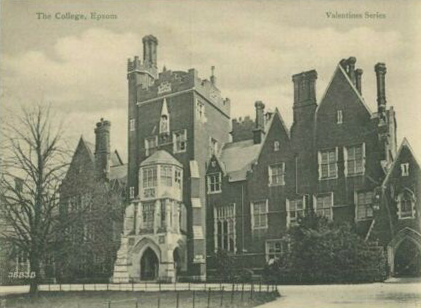
1909 – Chelsea, London
February 1909 was the spark that lit the touch paper on Hugh Walpole’s literary career. He moved into a room at No. 20 Glebe Place, Chelsea, His landlady was a Mrs King. Shortly afterwards publisher Smith Elder accepted his manuscript for The Wooden Horse, and in addition to his work with Curtis brown, he was given a position reviewing novels for the Standard newspaper.
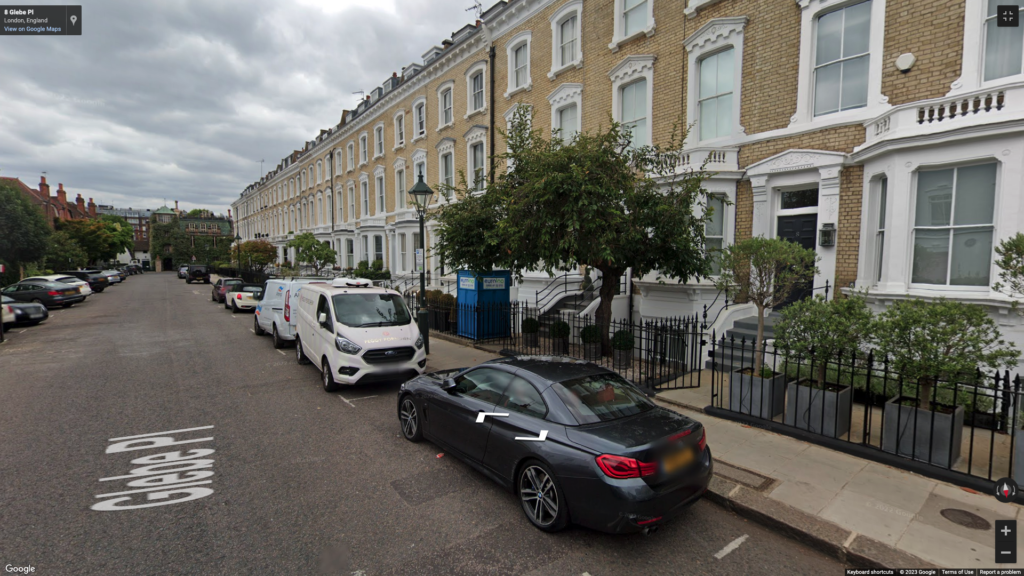
During his time in Chelsea, Hugh built his list of contacts and nurtured his friendship with Henry James, even spending a weekend at James’ home, Lamb House in Rye. When ‘The Wooden Horse’ was published, although as a first novel it wasn’t favourable financially, it did propel his career as an author into the spotlight. London brought, new plays, new books and new friends as Hugh’s circle of literary connections quickly grew. In just two short years, and three more novels later (including Mr Perrin & Mr Traill, which must have been still fresh in his mind from his time at Epsom), Hugh was starting to earn good money from his various positions and his writing and it was time to move on from his lodgings in Chelsea.
1911 – The West End, London
In 1911 Hugh started looking for a new flat in the West End of London, and thought about a cottage in the country. After a bout of scarlet fever and a month in hospital, in May 1911 he moved into 16 Hallam Street, London W1, near Portland Place. Being nearer to the centre of the publishing industry and the circus that went with it, Hugh’s time here was spent writing, entertaining his literary friends and going to the theatre. It was in Hallam Street that he wrote The Prelude to Adventure, which was noticed by the notable writer Arnold Bennet who sought to arrange a contract with an American publisher. It was at Hallam Street that he made his first attempts at writing a theatrical play, Robin’s Father.

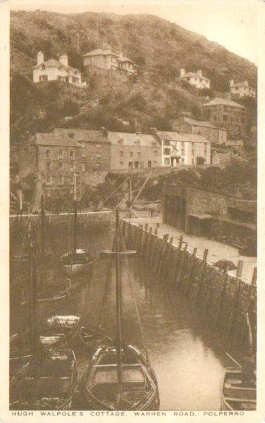
1913 – Polperro, Cornwall
Hugh paid a visit to St Ives for his holidays in 1912, and spent a week with his mother at Sennen Cove near Lands End in Cornwall, staying in rooms at Polperro. On the very last day of his stay he discovered his country retreat, a small 18th century whitewashed fisherman’s cottage called ‘The Cobbles’ overlooking Polperro beach and the harbour mouth.
The arrangement was to rent it by the year, and on the 13th March 1913, his 29th birthday, he moved into his new Cornish retreat with his new found special friend, stage designer and painter, Percy Anderson. By 1914 Hugh had left Hallam Street in London for good and was now working from Polperro, but the first world war was on the horizon.
1914 – Russia
1914 saw Hugh bit to do his bit for the war effort and after failing enlistment due to his poor eyesight, he became a war correspondent for the Daily Mail’s Russian bureau. He travelled out by train from London on September 12th and reached the British Consulate in Moscow on the 24th. He stayed for a few months after finding rooms with a Russian family, and became friends with R.H. Bruce Lockhart and his wife (Hugh would later write the introduction to Lockhart’s book ‘Memoirs Of A Secret Agent’ in 1933).
Hugh went to the front and later became head of the British propaganda bureau in St Petersburg. His adventures at the front would go on to produce his novel “The Dark Forest” and his experiences in St Petersburg would inspire “The Secret City”. Despite his situation in Russia Hugh still found time to get to work on writing “The Green Mirror”
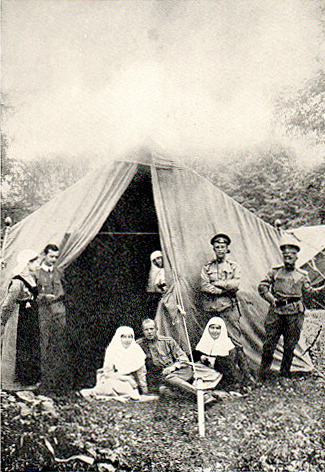
In a December 1914 issue of ‘The New Republic’ magazine, Hugh wrote “Moscow is very far from London. Upon this gray autumnal afternoon the sky, heavy and lowering, might have recalled our London days, but against it are the golden domes of the Moscow churches, domes not glittering now as they do in sunlight, but lying vaguely, dimly upon the heavy air. Only more strangely does that gray sky emphasize my distance from England.”
There was some comfort during 1915 however, as Henry James’ publisher Martin Secker sent Hugh some of James’ recent printings to Petrograd, as seen in Hugh’s copy of The Turn Of The Screw. Sadly a year later Hugh was distraught at the death of Henry James and that he missed his funeral back in England because of his work in Russia.
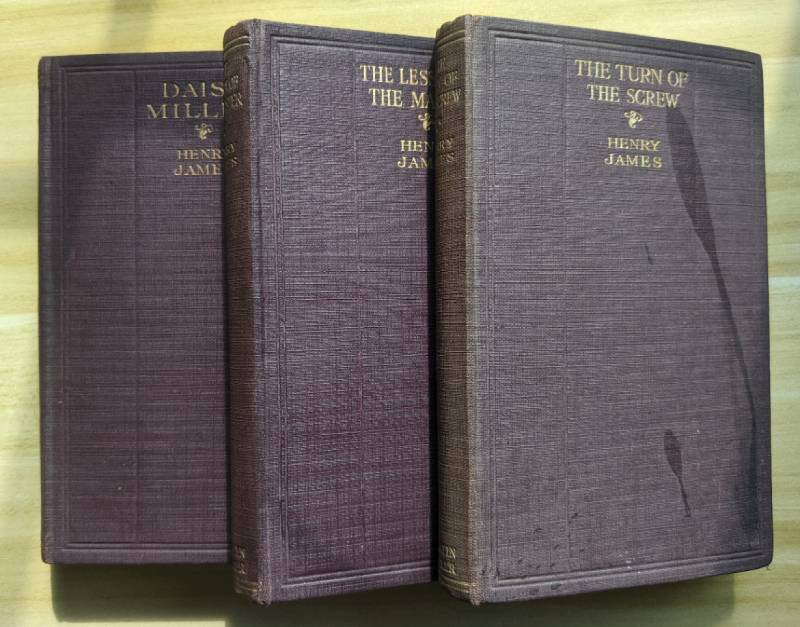
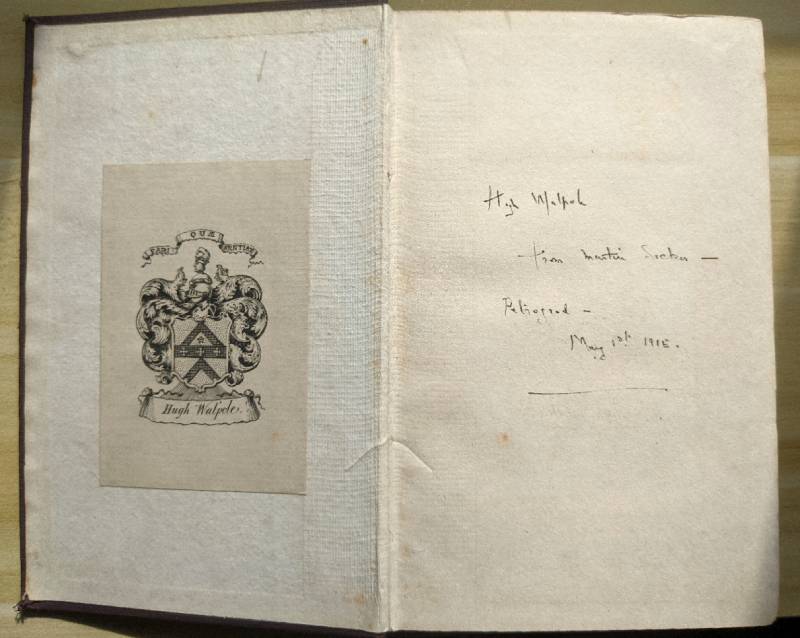
Hugh left Russia to return to London then Polperro for the last few months of 1915, but was back and forth to Russia throughout the next two years, finally arriving back in Aberdeen on 25th November 1917.
1917 – St James’s London
After the events in Russia, Hugh was recognised in the 1918 New Years Honours list with the award of a C.B.E. He rented a small flat in Ryder Street, St James’s London for a year.
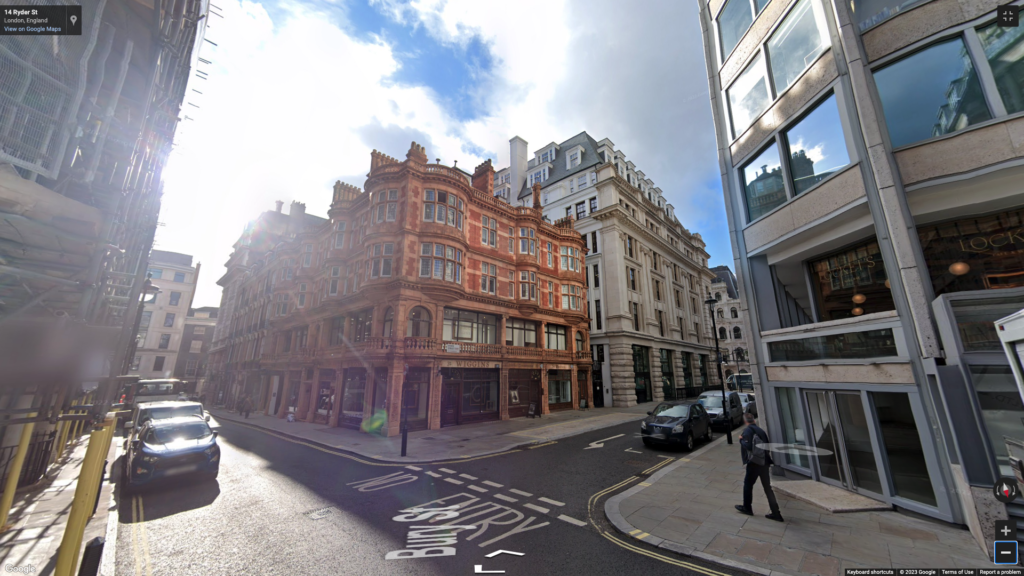
Most of the next 3 years were spent profusely collecting books, frequent travel between his London and Polperro bases, travelling to America for his first lecturing tour and studious work on his book ‘The Cathedral’. In 1920 Hugh also stayed with Vita Sackville-West and her husband Harold Nicolson at their home in Long Barn, Sevenoaks, though by the end of the year Hugh had secured a new place to live in London.
1920 – Regents Park & Green Park, London.
Hugh now had the means for a grander home. On September 6th 1920 he purchased 24 York Terrace, London, overlooking Regents Park. It was whilst he was living here that he met a new friend, the Danish tenor, Lauritz Melchior who he invited to stay and for the next two years, Melchior stayed in the top floor, making it his London base.
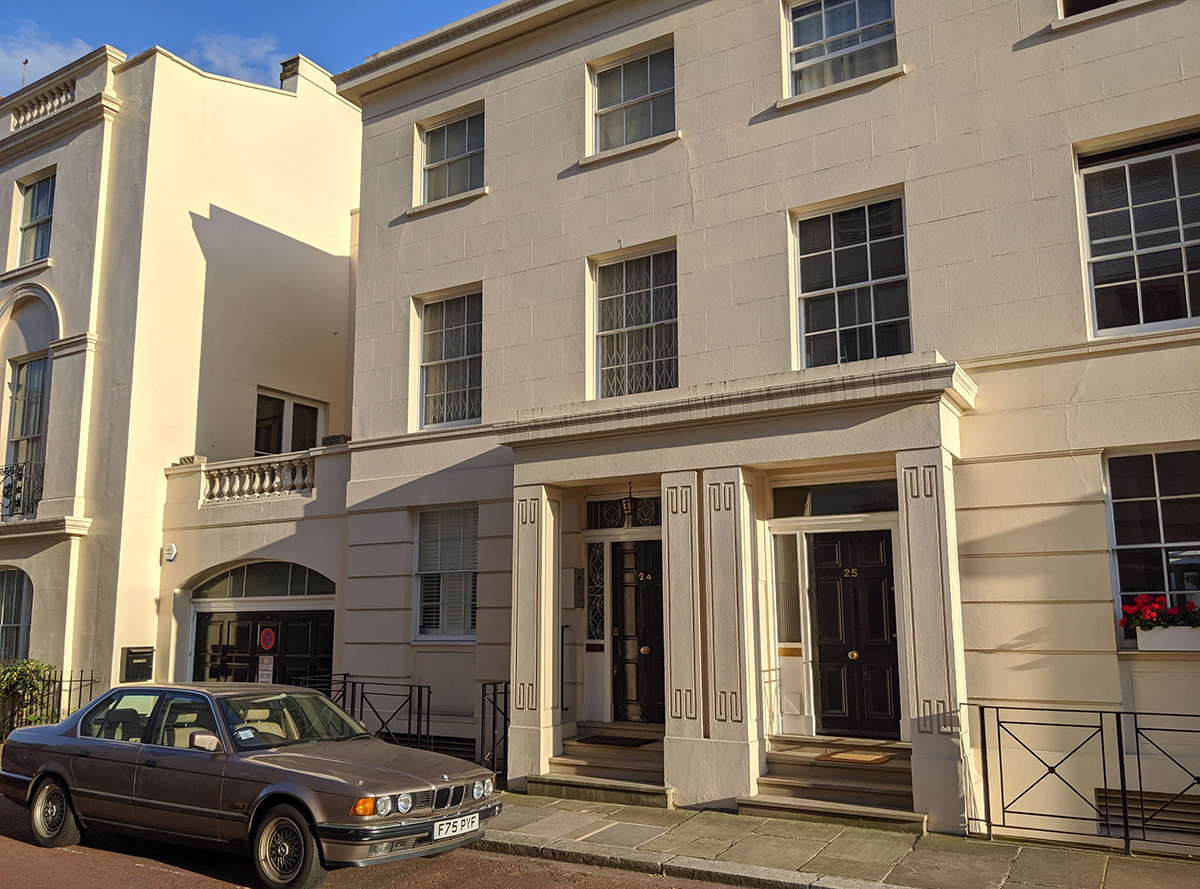
Hugh set about perfecting York Terrace, bringing his books up from Polperro to add to his ever increasing library, and adding a prized portrait of Walter Scott to hang over his drawing room fireplace. Hugh gave many dinner parties at York Terrace and it was here along with many of the influential players in the publishing industry that he founded the Society Of Bookmen in 1921.
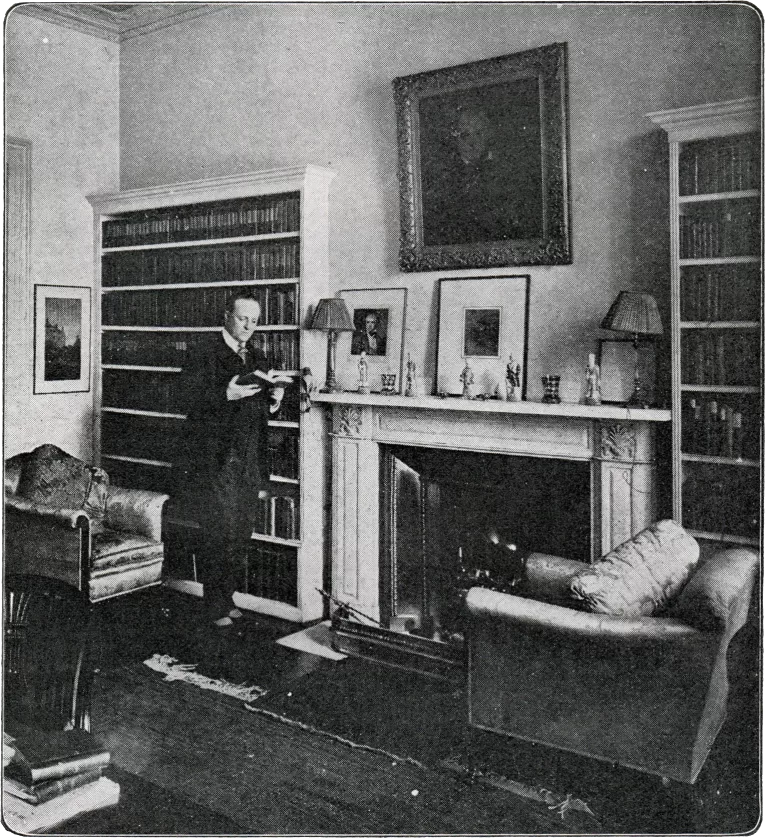
Just a year after moving in to York Terrace, it was time for Hugh to relinquish his cottage in Polperro. As his out of town retreat was now gone it left Hugh still yearning for his ideal country home and vowed to find another, somewhere as yet unknown. However York Terrace saw his prolific writing continue and noteable books written here were The Thirteen Travellers, Jeremy and Hamlet and the completion of The Cathedral. He also collaborated on the stage play “The Barretts Of Wimpole Street’ with playwright Rudolf Besier.
He employed the services of Major Douglas Chanter who acted as his secretary, chauffeur and in part, companion. whilst at York Terrace, though it was whilst on a holiday in the Lake District with his family in 1922 (his first return to the lakes since his childhood holidays) that he realised he was weary of London and finally wanted to settle down with some permanence, perhaps in Cumberland.
Throughout 1922 and 1923 with large amounts of money pouring in from his many published works, he embarked on a major lecturing tour of America, a place that started his obsession with collecting expensive artworks, and whilst in New Your he started writing Portrait Of A Man With Red Hair. He met with the Hollywood stars of the day including Charlie Chaplin and Douglas Fairbanks. Whilst in America he also made the final arrangements to sell York Terrace with a telegram to his solicitor. Upon his return to England, in September 1923 he rented a service flat in Berkeley Street, just around the corner from The Ritz, near Green Park.
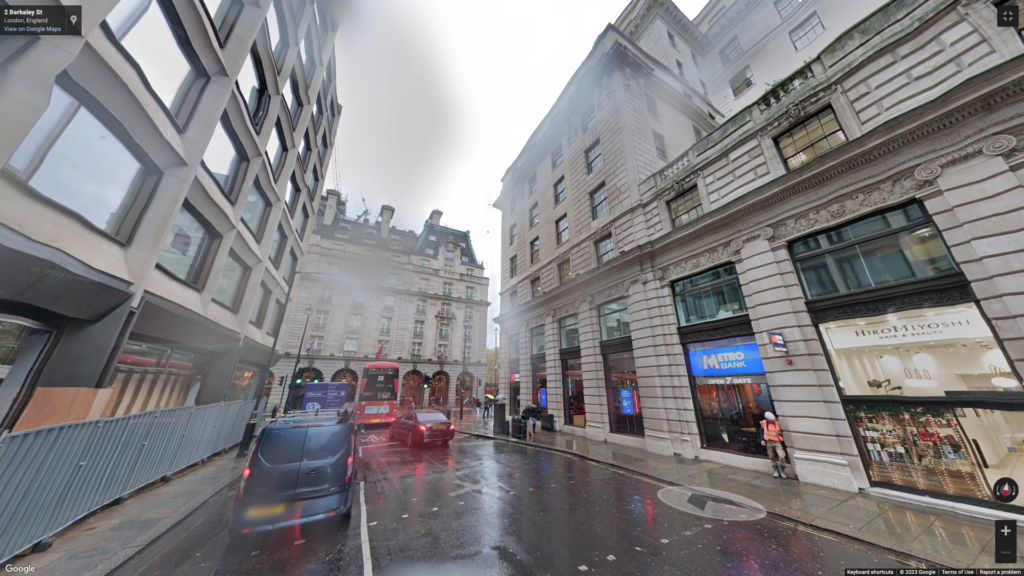
1923-24 – The Lake District, England & Piccadilly, London
At the end of October 1923, Hugh set off with Chanter on a journey to the Lake District to pursue his search to purchase a permanent home. As if from a page of one of his novels, through an other worldly experience at the end of his house hunting adventure, he discovered the house, literally, of his dreams – Brackenburn.
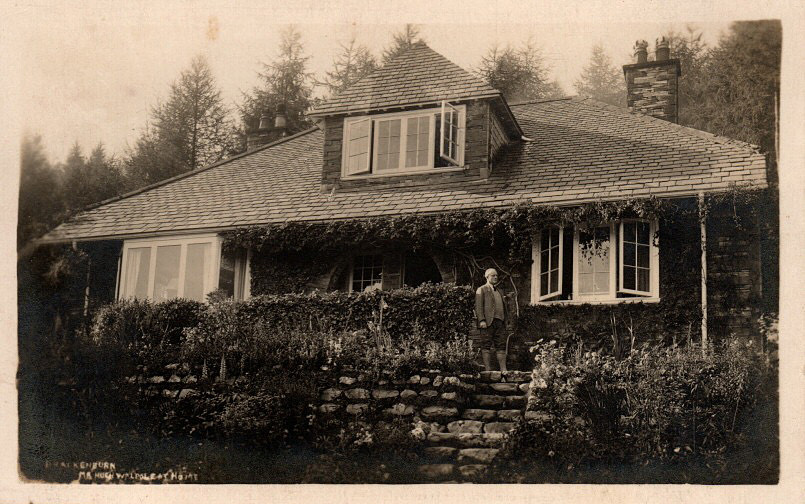
In his own words, Hugh describes the serendipitous set of events as they occurred, in his private hand-made book “The Cottage & The Cow”.
“After that return from America I went up with a friend and a motor-car to find my home. It had seemed to me that it would be the easiest thing in the world – a simple cottage built of Cumberland stone, standing on a hill looking down to a lake and across to the mountains. There would be a garden, a little wood, a running stream, many birds and a big room (as big as the rest of the cottage) for my books. All these things, I was convinced, were waiting for me. It was as though I had seen the place in a dream.
Well, for more than week a we motored, my friend and I. We motored and we motored. It seemed that the district did not want me; it seemed that the cottage of my dreams was lost in my dreams and could not find its way out again. We became very depressed, my friend and I, for the country was, that week, a miraculous shining beauty and the houses to let or for sale of a hideous and revolting ugliness. were indeed one or two old manor There houses, vast, ivy-grown, sunk in derelict parks, houses that had known their last days of happiness sixty years ago when everyone had vast families, when every one stayed at home, when there were tennis parties and children played robbers in the wood, when the rooms were hung with holly for Christmas and everyone trooped across the Park to church on a Sunday morning. alternative to these was the Villa – the Villa with a garage, a path of rebellious pebbles and a radio-set – all good things in themselves, but not enough.
There came the day then when we abandoned the search and climbed into the car for Scotland. At that moment the miracle occurred, for the car refused to start and the Lady of the Hotel, bidding us farewell, said: “There was a very nice little cottage I saw last Sunday, overlooking the lake. Very nice, I’m sure and it had For Sale up in the garden. “Impossible!” we declared. “We have been twice round the lake.” “I saw it last Sunday.” “Impossible! We’ve looked at everything.
The car began to splutter, “Shall we try once again? Why not? There is such a thing as active consciousness of Fate.
So round the lake we went once more and there it was – a cottage of grey stone in the hollow of the hill, above the trees, with a wood, a running stream, two silver birch and a squirrel on the lawn. I ran up the little path, looked down to the lake, across to Skiddaw and Blencathra. An elderly lady came towards me. “How much is this cottage?” I asked. “So much,” she replied, “and there is a big room for your books at the end of the lawn.”
“I’ll buy it.” I said-for how can you deny your dream. My friend gasped and pulled me by the sleeve, but i was past all caution and I signed a paper.
A few months later I went up to Cumberland and I walked round the lake. I got my keys from the village and walked up the path and unlocked the door. The cottage was quite empty. neither swept nor garnished. The grass was long on the lawn and there was a baby’s perambulator with a bird’s nest in it outside the front door. But it was a glorious April evening and the daffodils flamed in the grass and the stream was running like mad. Rolled up in my great-coat, I slept that night on the floor of the sitting-room. Very sore in the morning. I fed the squirrels at the back door. I was radiantly happy.”
At Brackenburn, Hugh went on to write many more books and of course his most famous and popular series of novels, The Herries Chronicles. He was accepted by the locals, no doubt in part due to his popularisation of the area, and many of the local residents fought amongst each other over whether their houses and farms were the locations Hugh’s stories.
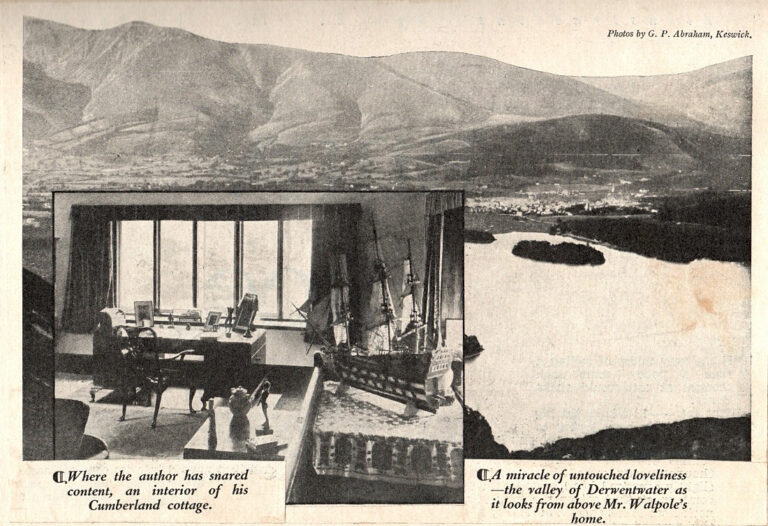
Hugh knew that although he now had a permanent main home in the lakes, he still would need a base in the literary capital, London. So in January 1924 he leased a first floor flat at 90 Piccadilly, again near The Ritz.

The flat looked out across Piccadilly and had a direct view over the entrance gates to Green Park, down the Green Park avenue which leads to Buckingham Palace. He furnished his London home with many treasures including more books, hoards of artworks (many apparently stacked high against the walls if there was no space to hang them), bronzes and many other expensive artefacts.
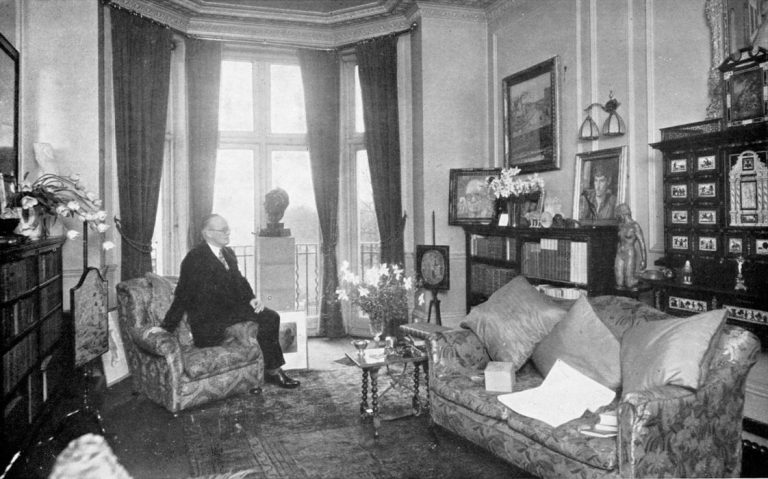
It was at Piccadilly that he would meet Harold Cheevers, a Metropolitan policeman and native Cornishman who was married with two children and had a great interest in engineering. A few years later after Chanter had left his employment, Harold entered Hugh’s service as (in Hugh’s own words in a letter to a friend) his “Secretary – Chauffeur – Friend and Rock!”
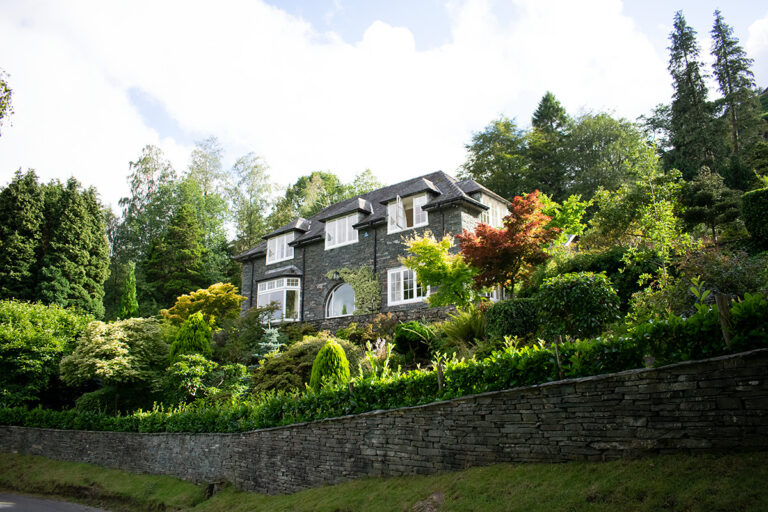
Hugh and Harold would spend many years at Brackenburn, playing chess together long into the night. Hugh would be deep into his characters in the writing room and Harold would be in the garage below, tinkering with the car. Hugh was firmly established, both in the literary world, and now with his domestic affairs too. He described Brackenburn as “his little piece of heaven on Catbells”.
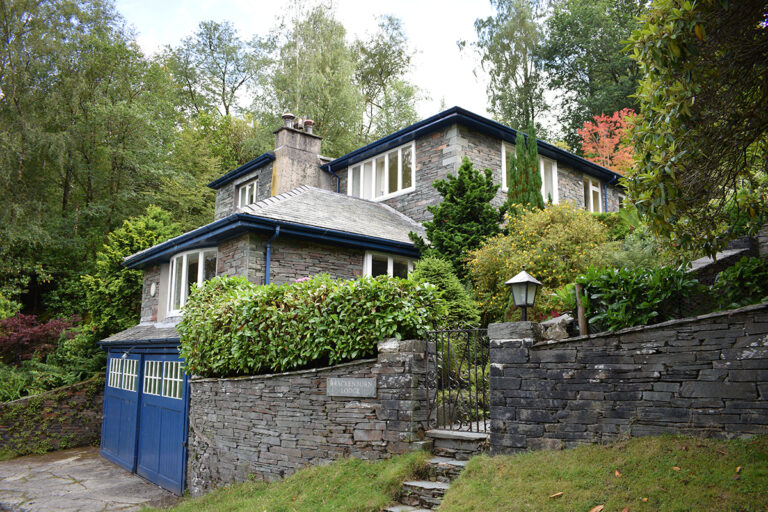
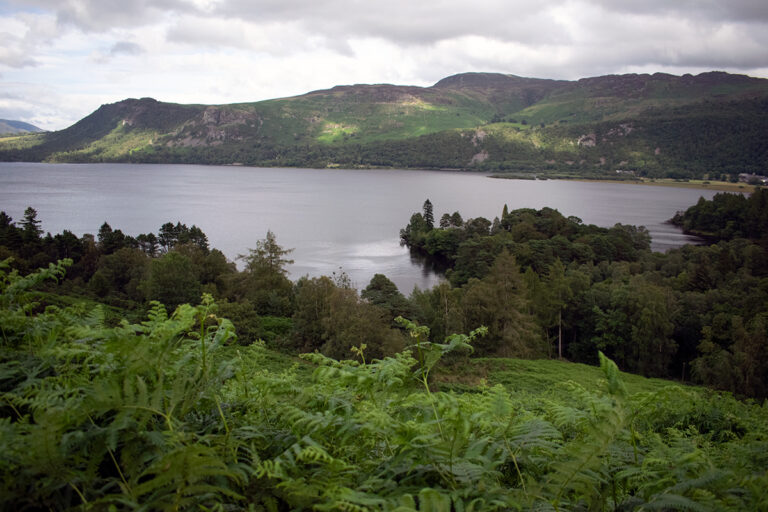
1928 – Hampstead Garden Suburb, North London
In January 1928 Hugh leased a house for the Cheevers family in the leafy North London suburb of Hampstead Garden Suburb at 19 Thornton Way, NW11. He furnished a room in it for himself which he stayed in for odd nights and at weekends when he was in London. He became one of the family to the Cheevers and found that Hampstead provide him the peace to write, which his flat in Piccadilly simply couldn’t. Hugh had first experienced the tranquility of Hampstead back in 1910 when he regularly visited H.G. Wells at his home there.
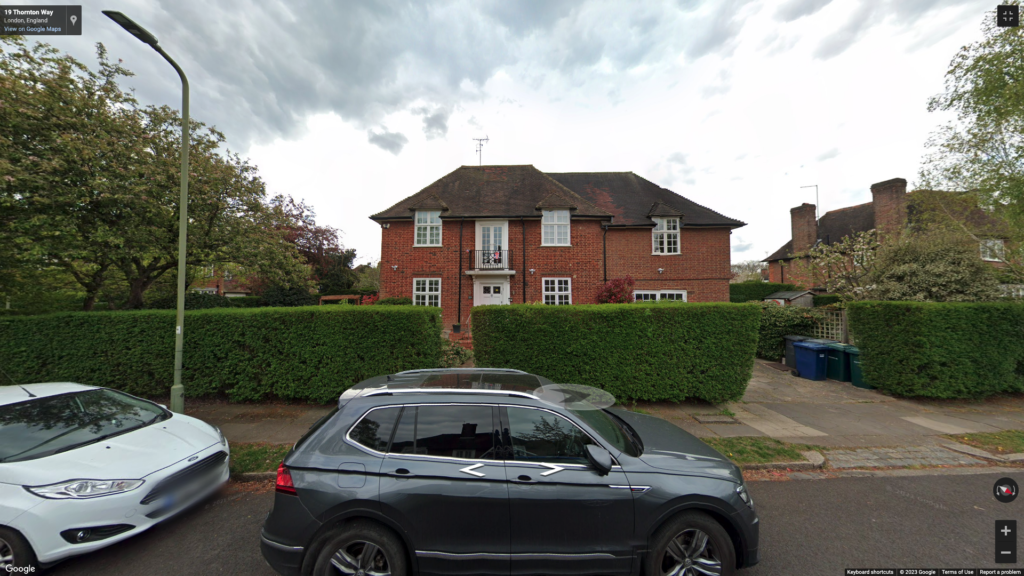
Later, in 1940 as the Second World War was in full flow, he would cling to the Cheevers as never before. “That family is the centre of my life, and how lucky I am to have it!” he wrote in his diary. Harold became an Air-Raid warden and a shelter was erected in the Cheever’s garden where during the blitz, the family would take refuge. Hugh would take a small box of his possessions and various books into the shelter and during periods of boredom there would draw pictures and make notes on the endpapers.
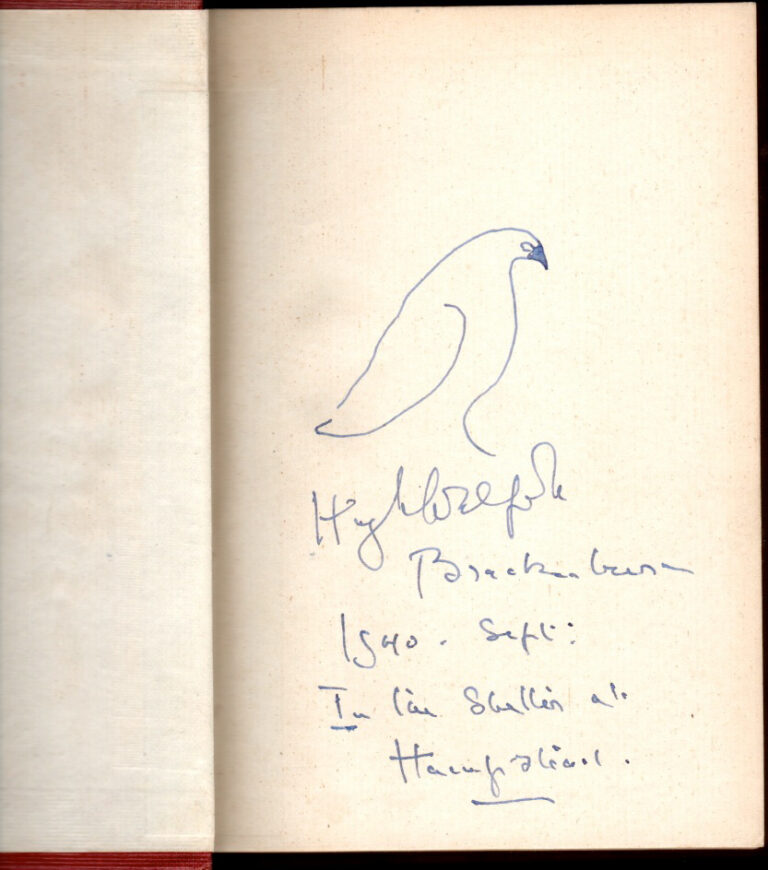
It was at Hampstead where despite the peace that championed his writing, on October 15th 1941, chaos ensued after four bombs fell in the road outside. Whilst the house stood, the windows were smashed and the doors blew in and the near miss took its toll on Hugh’s health. Hugh and the entire Cheevers family set off to seek temporary refuge in Cumberland at Brackenburn. Here he was in the flow of writing what would be his final, unfinished novel Katherine Christian.
Hugh did return to London as he was due to deliver two broadcast talks in London. He found that Hampstead and Piccadilly were both too dangerous after all the ceilings and one wall of his Piccadilly flat had been blown in by a night time air-raid, so he took a room at the Dorchester hotel in Park Lane instead. During this time he also stayed with Alan Bott and his family at Ham Common in Richmond-Upon-Thames.
1941 – Final Resting Place, St John’s Churchyard, Keswick, The Lake District
Hugh’s health deteriorated, particularly his nerves, after the near miss at Hampstead and the relentless wartime siege on London. The Cheevers did eventually return to their patched up Hampstead home, and Hugh did return to Brackenburn. He lived out his final days there, until his death on the 1st June 1941, with his sister Dorothea and Harold by his side.
He now lies in peace in his final resting place at St John’s Churchyard, Keswick, in the heart of lakeland, with a permanent view over Derwentwater, Catbells and his beloved Brackenburn, the place he finally could really call home.
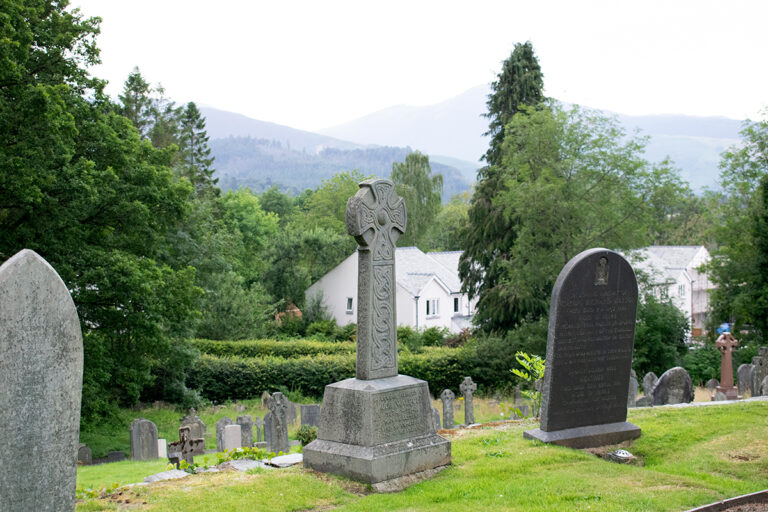
The most fitting words I can find to close out this article are from Hugh Walpole himself. from an article he contributed to the 1934 book “The English Country”.
“When I stand on Esk Hawse and look down into Eskdale I make my proper obeisance to the Collingwoods, the Calverts, the Cassons and the great company of ghosts behind them from the author of Owd Bob to Wordsworth, but I know something that they none of them can ever have known – how it feels to discover by a miracle that you are not homeless and ‘wanderless’ as you had once supposed, but that on this spot your feet touch the ground and the ground does not reject you and, until you die, there is an acre of soil that is friendly and ‘sib’ to you.

